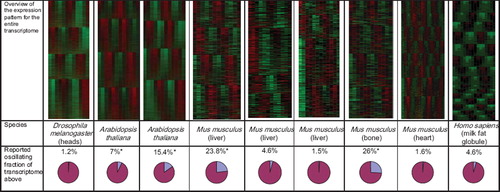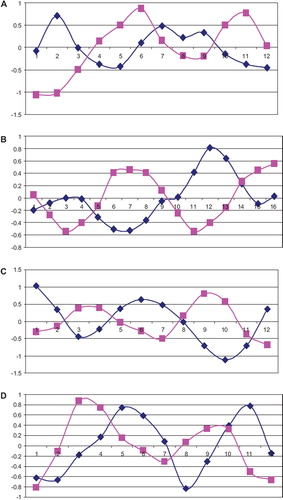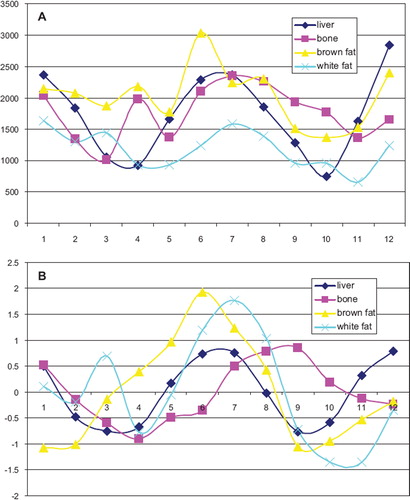Figures & data
Figure 1. Overview of the expression pattern and reported circadian fraction of transcriptome. The heat-map diagrams show higher (red) and lower (green) levels of gene expression for two (four in case of murine heart study) circadian periods for the entire set of transcripts interrogated in the analysis. The algorithm generating heat-maps of time-line gene expression is explained in Supplementary Figure 1. For the original reports marked (*) there is available reanalysis reporting circadian oscillation in nearly 100% of corresponding transcriptome.

Figure 2. Expression profiles of the genes forming oxidative and reductive parts of oxidative phosphorylation in plant (A), human (B), mosquito (C), and mouse (D).

Figure 3. Expression profiles of GAPDH in different murine tissues in absolute intensity (A) and scaled relative abundance used for detection of periodic pattern (B). Data acquired in Zvonic et al. studies (Citation11,Citation12).
